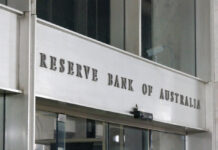The US dollar’s steep decline from mid-May to early June has been arrested, but unfortunately its comeback has been mostly driven by bad news, with Covid-19 cases accelerating in large US states and US-China tensions increasing again. The Aussie dollar however remains within familiar ranges.
The US dollar’s steep decline from mid-May to early June has been arrested, but unfortunately its comeback has been mostly driven by bad news.
Equities have found support from generous monetary and fiscal policy globally and many countries are reopening their economies, including for some travel. And this is still the case in some parts of the US too, notably New York where restaurants and beaches are reopening.
But rapid growth in Covid-19 cases in populous states such as Texas, Florida and California has driven a rebound in the national total. The Republican governor of Texas Greg Abbott said that “COVID-19 is spreading at an unacceptable rate in Texas” as he announced a suspension of elective surgery in its biggest cities.
The scale of the virus spread across a number of states calls into question the pace of the anticipated US economic recovery. Economists’ consensus forecast is for US GDP to have slumped by about 9% in the second quarter but to then rebound by 5% in the third quarter, with further strong growth thereafter. Such an outlook must be premised on a case curve similar to New York’s. This now seems too optimistic.
Fed Chair Powell testified this month that, “Until the public is confident that the disease is contained, a full recovery is unlikely.” Even before the current upswing in Covid-19 cases, the Fed sounded open to further stimulus. This should ultimately weigh on the US dollar.
But short term, the dollar might benefit from safe haven demand as disturbing virus headlines keep investors on edge, especially given US-China tensions. This week equities and the Aussie dollar tumbled briefly on a clumsy declaration by White House adviser Peter Navarro that the US-China trade deal was, quote “over”. Soon afterwards, he backtracked and President Trump tweeted that the deal is intact.
But top US officials continue to conduct a war of words against China and this week the US Senate passed a bill that would penalise banks doing business with Chinese officials involved in the new security laws for Hong Kong.
Australia’s data calendar was quiet this week, with most attention on our own Covid-19 flare-up. It is of course on a much smaller scale than in the US and appears to be only in certain areas of Melbourne’s suburbs.
But the Victorian government reacted by cancelling planned looser restrictions that would have benefited regional areas as school holidays loom and the New South Wales government has switched from urging all state borders to reopen to discouraging travel between Australia’s most populous states. The so-called “travel bubble” between Australia and New Zealand seems likely to be delayed.
This takes some shine off Australia’s optimistic economic narrative though on the positive side for the Aussie dollar, next week’s May trade data should show that Australia recorded a trade surplus for the 29th consecutive month. But whether the Aussie breaks out of its recent trading ranges of 68 to 70 cents may well depend on whether the US can contain its renewed virus outbreak.
Event risk
US Jun consumer confidence, Canada Apr GDP (Tue), Aust May building approvals, Japan Q1 Tankan business survey, US Jun manufacturing ISM survey, FOMC Jun minutes (Wed), Aust May trade balance, US Jun employment report (Thu), Aust May revised retail sales, US Independence Day holiday observed (Fri)














